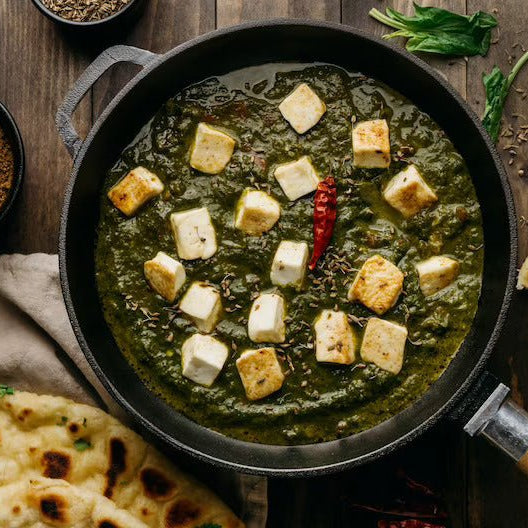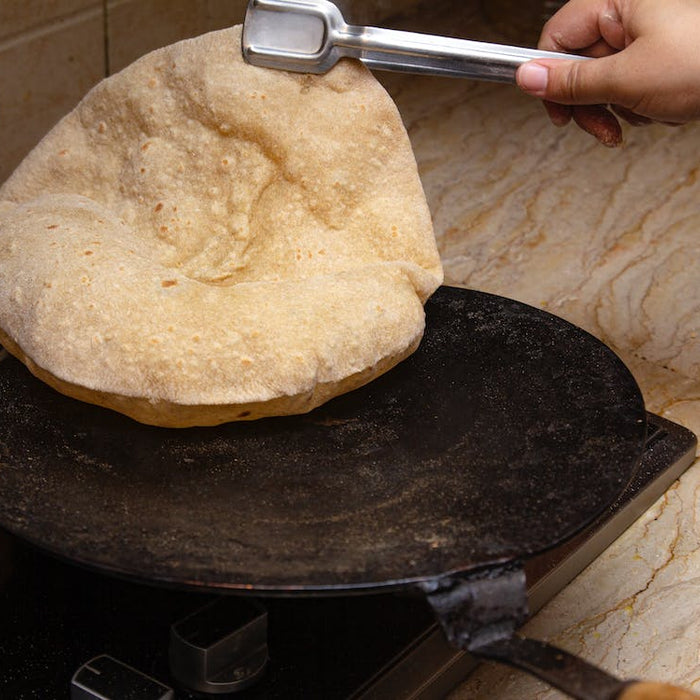
Samosa: The Iconic Indian Snack Delighting Palates Across the Globe [Updated]
Samosa is an iconic triangular pastry that has become synonymous with Indian cuisine. This delectable snack is made from a thin, crispy outer layer, typically made of all-purpose flour, and stuffed with a savory filling. The most common filling comprises spiced potatoes and peas, but variations include minced meat, lentils, and even sweet fillings for special occasions.

When did Samosa originate?
The history of samosa traces back to the Middle East and Central Asia, where it was believed to have originated around the 10th century. The word "samosa" is believed to have its roots in the Persian word "sanbosag." It was the Persian traders who introduced this delicious snack to the Indian subcontinent during the Delhi Sultanate era, which was around the 13th century.
Where did Samosa's journey begin?
The samosa's journey began in Central Asia and the Middle East, with the concept of stuffed pastries originating in these regions. As it spread along the ancient trade routes, it found its way to the Indian subcontinent, particularly in regions ruled by the Delhi Sultanate. Over time, samosa gained immense popularity throughout the Indian subcontinent and evolved into the much-loved snack we know today.
Who contributed to the popularity of Samosa?
The popularity of samosa owes much to the rich cultural amalgamation that defines Indian history. As Persian traders brought samosa to India, local cooks and households adapted the snack to suit Indian tastes. Over the centuries, it became an integral part of Indian culinary traditions and regional variations emerged, showcasing the diverse flavors of the country.
Why is Samosa so beloved?
Samosa's charm lies in its perfect combination of flavors and textures. The crispy outer layer gives way to a flavorful filling, bursting with aromatic spices and ingredients. Its versatility is another reason for its adoration. Whether as a delightful tea-time snack or a favorite street food, samosa has found its way into every corner of Indian life.
Which regions have unique Samosa variations?
India's regional diversity shines through the various samosa adaptations found across the country. Here are some noteworthy regional samosa variations:
-
Punjabi Samosa: The Punjabi samosa is larger in size, and its filling often includes potatoes, peas, and sometimes, minced meat. It is known for its spiciness and is best enjoyed with mint chutney.
-
Rajasthani Samosa: Rajasthani samosas are typically smaller in size and filled with a spicy mixture of potatoes, onions, and a blend of aromatic spices. They are often accompanied by tangy tamarind chutney.
-
Bengali Singara: Similar in shape and concept to the samosa, the Bengali singara features a different filling with a sweet and tangy taste. The stuffing consists of a mix of spiced vegetables and, sometimes, even meat or fish.
-
Goan Samosa: Goa's take on the samosa includes a filling of spicy minced meat, cooked with a distinct blend of Goan spices. It provides a delightful fusion of flavors.
-
Hyderabadi Samosa: The Hyderabadi samosa is famous for its filling, which combines minced meat with lentils, coconut, and an array of spices.
-
Kolkata's Chinese Samosa: As the name suggests, this variation includes a filling inspired by Chinese cuisine, often featuring noodles, mixed vegetables, and soy sauce.
Whose legacy is Samosa now?
The legacy of samosa belongs not only to the ancient traders and cooks who introduced it to the Indian subcontinent but also to the generations of talented chefs and home cooks who perfected its preparation over time. Today, samosa remains an integral part of Indian festivities, street food culture, and restaurant menus.
As the popularity of Indian cuisine has spread worldwide, so too has the fame of the samosa. Indian restaurants and street vendors in various countries now offer this delightful snack, introducing people from diverse cultures to its mouthwatering taste.
To cook samosas at home and replicate the taste of this beloved snack, you'll need the right cookware to ensure perfect results. One cookware that comes highly recommended for preparing samosas is MACclite.
MACclite is a high-quality non-stick cookware brand known for its durability and efficiency. When making samosas, a non-stick pan is essential to prevent the pastry from sticking and tearing while frying. This feature allows for easy flipping and ensures that the samosas attain a beautifully golden and crispy texture.
The even heat distribution of MACclite cookware is also crucial for cooking the samosas uniformly, ensuring that they are cooked to perfection on all sides. This feature is particularly beneficial when you're frying multiple samosas at once.
Additionally, MACclite's non-stick surface requires minimal oil, making it a healthier option for frying samosas compared to traditional pans, which often require more oil to prevent sticking.
Moreover, MACclite's sturdy construction and easy-to-clean design make it a convenient and long-lasting addition to your kitchen. It can withstand the high temperatures required for deep-frying without warping or losing its non-stick properties.
In conclusion, the samosa is much more than just a snack; it represents the rich history, diverse culture, and culinary creativity of India. Its journey from the Middle East to the Indian subcontinent and subsequent regional adaptations showcase the beauty of cultural exchange and fusion. As samosa continues to delight palates across the globe, it serves as a symbol of the unity found in the joy of sharing food and tradition. So, the next time you savor a crispy, savory samosa, remember the centuries of history and love that have gone into making this triangular treat a culinary treasure loved by millions.
Featured collection
-
Original price - Original priceOriginal price Rs. 19.99Rs. 19.99-Current price Rs. 19.99
Product title
Original price - Original priceOriginal price Rs. 19.99Rs. 19.99-Current price Rs. 19.99 -
Original price - Original priceOriginal price Rs. 19.99Rs. 19.99-Current price Rs. 19.99
Product title
Original price - Original priceOriginal price Rs. 19.99Rs. 19.99-Current price Rs. 19.99 -
Original price - Original priceOriginal price Rs. 19.99Rs. 19.99-Current price Rs. 19.99
Product title
Original price - Original priceOriginal price Rs. 19.99Rs. 19.99-Current price Rs. 19.99 -
Original price - Original priceOriginal price Rs. 19.99Rs. 19.99-Current price Rs. 19.99
Product title
Original price - Original priceOriginal price Rs. 19.99Rs. 19.99-Current price Rs. 19.99 -
Original price - Original priceOriginal price Rs. 19.99Rs. 19.99-Current price Rs. 19.99
Product title
Original price - Original priceOriginal price Rs. 19.99Rs. 19.99-Current price Rs. 19.99
Blog posts
-
-

What is Karahi or Kadahi? Exploring Its Best Use in 2024 | Non Stick
The kadai or karahi holds a special place, when it comes to Indian cooking,choose MACclite kadai cookware for a healthier and more enjoyable cooking experience.Read now -

Best Tawa for Roti 2024 - Guide to Choosing the Best Iron Tawa for Your Family
The roti tawa is the right tool to achieve the ideal texture and taste. Finding the perfect roti tawa for your family can be both rewarding and challenging in 2024 due to the many options available.Read now


